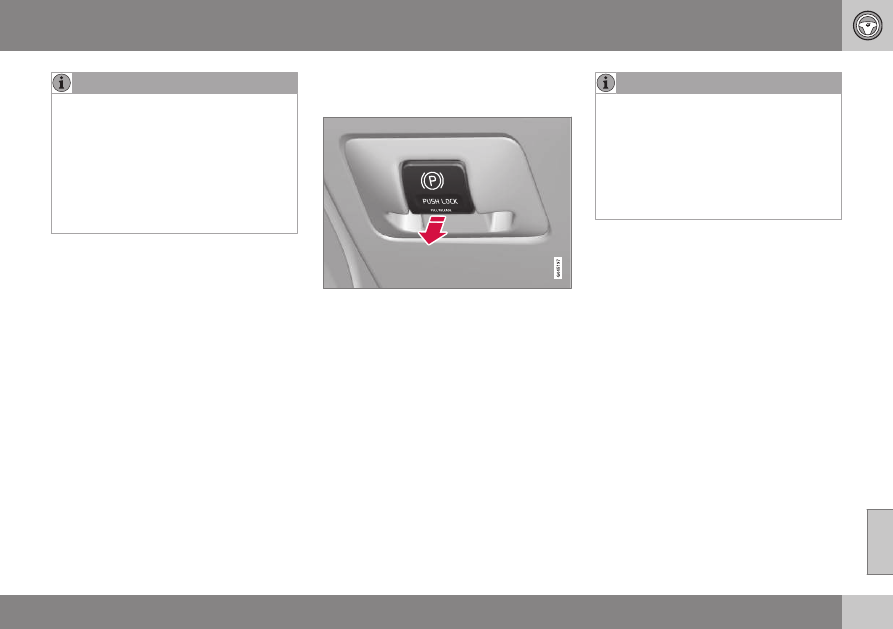Volvo S60 Inscription (2016 year). Manual - part 14

08 Starting and driving
08
}}
233
•
In an emergency the parking brake can
be applied when the vehicle is moving
by holding in the control. Braking will
be interrupted when the accelerator
pedal is depressed or the control is
released.
•
An audible signal will sound during this
procedure if the vehicle is moving at
speeds above 6 mph (10 km/h).
Related information
•
Parking brake – general information
•
Parking brake – releasing (p. 233)
•
Parking brake – symbols and messages
•
Parking brake – releasing
Releasing the electric parking brake
Parking brake control
Manual release
1. Fasten the seat belt.
2. Insert the remote key in the ignition slot
and press the START/STOP ENGINE
button (or press the START/STOP
ENGINE button with a valid remote key in
the passenger compartment on vehicles
with the optional keyless drive).
3. Press firmly on the brake pedal.
4. Pull the parking brake control.
Automatic release
1. Start the engine.
•
For safety reasons, the parking brake is
only released automatically if the engine
is running and the driver is wearing a
seat belt.
•
The electric parking brake will be
released immediately when the acceler-
ator pedal is pressed and the gear
selector is in position D or R.
2. Fasten the seat belt.
3. Move the gear selector to position D or R
and press the accelerator pedal. The
parking brake will release when the vehi-
cle begins to move.
Heavy load uphill
A heavy load, such as a trailer, can cause the
vehicle to roll backward when the parking
brake is released automatically on a steep
incline. To help avoid this:
1. Keep the electric parking brake lever
pushed in with the left hand while shifting
into Drive with the right.
2. While pressing the accelerator pedal to
pull away, release the parking brake lever
only after the vehicle begins to move.
Related information
•
Parking brake – general information
•